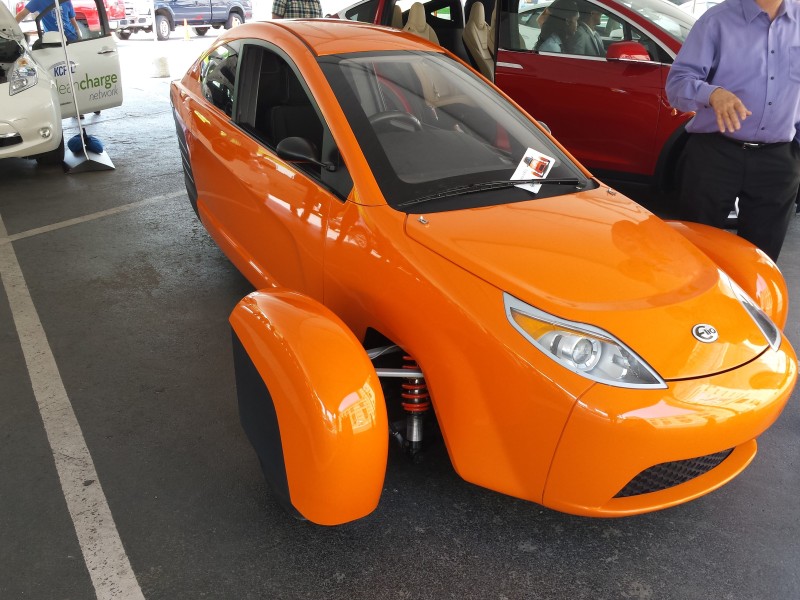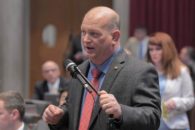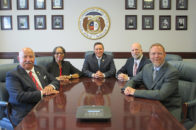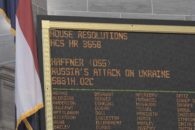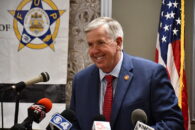KANSAS CITY, Mo. — If in the next couple of months you see a couple of trucks traveling down the highway with only a couple of feet between them, don’t be alarmed. They’re (probably) part of a pilot program using Bluetooth technology to connect the trucks in a “platoon” system designed to increase fuel efficiency.
The truck platooning system is just one of hundreds of ideas the the Missouri Department of Transportation is considering as part of their Road to Tomorrow project to prepare the roads for future innovations and technology and to generate revenue from the existing transportation network.
The initiative celebrated its one-year anniversary with Wednesday’s meeting of the Missouri Highways and Transportation Commission, where Commissioner Steve Miller has been a proponent of Road to Tomorrow, helping to create the initiative while he chaired the commission.

“We are well down that road to realizing something great for our state and community,” he said, after project leader Tom Blair gave a presentation on the project’s first year and its future.
Part of the anniversary celebration included Commissioner Mary Nelson and Blair driving Tesla Model S sedans across I-70 from St. Louis to the meeting’s site at Union Station in Kansas City. In addition to being electric cars, the Model S vehicles can operate autonomously, including scanning for a parking spot and parallel parking on command. Those vehicles, along with several other energy efficient and alternative fuel vehicles, were displayed outside Union Station.
Blair said that in its first year, Road to Tomorrow has received more than 350 submissions from around the world as it seeks to turn Missouri’s highways into laboratories for the highway of the future. It’s especially imperative, he said, as technology is rapidly improving and changing, disrupting the transportation industry.
While “everyone is becoming aware of this change,” Blair said, no one is preparing a long-range plan for the future. That includes plans to turn new technologies into revenue for cash-strapped infrastructure systems like Missouri’s.
Blair highlighted a couple of proposals Road to Tomorrow is currently working on to futurize the state’s highways.
These included a Smart Highway Pilot Project, which would incorporate glowing road markers.
“Smart pavement, might change the way we build roads,” he said. Smart pavement includes manufacturing pavement in factories under ideal conditions. “That would open up the opportunity, for instance, detectors that might tell us when a pothole might develop before it actually develops.”
Smart highways might also include technology to improve how autonomous cars work. “What does it mean if we have smart vehicles traveling on dumb roads?” Miller asked. He also gave examples of self-charging cars through smart pavement and Wifi included on the roads.
Blair also discussed a project from Idaho that would replace some roads with solar panels that could be driven on. Those panels will be in place as part of the Solar Roadway Pilot Project on Route 66 in Conway, possibly by the end of the year.
No matter what the project, Miller says the question is always “How can we generate revenue? All of the ideas that we have might not come to fruition unless there is money to pay for it.”
To that end, some of Blair’s projects include aggressive applications for grants available to governments to try some of these disruptive technologies. He said their work is making the grant process more efficient and effective, so instead of Missouri simply applying for these opportunities, they are actually competitive.
To succeed in the initiative, Miller said Road to Tomorrow and MoDOT as a whole will have to get used to the idea of failure.
“How do we justify as a public entity the type of research and development that one sees only in the private sphere?” he asked. “The only way where we may be able to push the transportation envelope is to risk failure. That takes a lot of courage from a department to do that. We’re going to be pressing how we relate to the public and the understanding of what public entities can and can’t do.”
Part of the answer to that question includes using grants and pilot programs to test these ideas, like the Solar Roadway project in Conway.
And for a lot of these proposals, they’ll only need legislative approval for certain aspects of the projects while respecting the public process. The truck platoon pilot program needed legislative approval during the 2016 session to exempt the trucks from tailgating laws, and similar legislation may be needed as more proposals move towards the pilot phase.

“We’ll have to look at those individually and certainly there’s a public process to go through when we’re looking at these technologies. There’s a safety process we have to look at,” McKenna said. “We have to be very careful about how we do them and involve the legislature and the public as we go. In some of these areas, I don’t think that requires specific legislative authority. As we get to new revenue streams, we may need some enabling legislation for some of those.”
The Road to Tomorrow update came at an MHTC meeting where there was some discussion of where funding for highways was going to come from in the future, after a session in which the legislature failed to address several options, including a gas tax or tolls on I-70. MoDOT could find new revenue streams through options generated by the initiative.
“Effectively, what we’re trying to do is create guaranteed revenue in certain alternative streams that can be essentially monetized, brought to the capital markets, advance some money for the investments that needs to be put into the infrastructure itself,” McKenna said.

